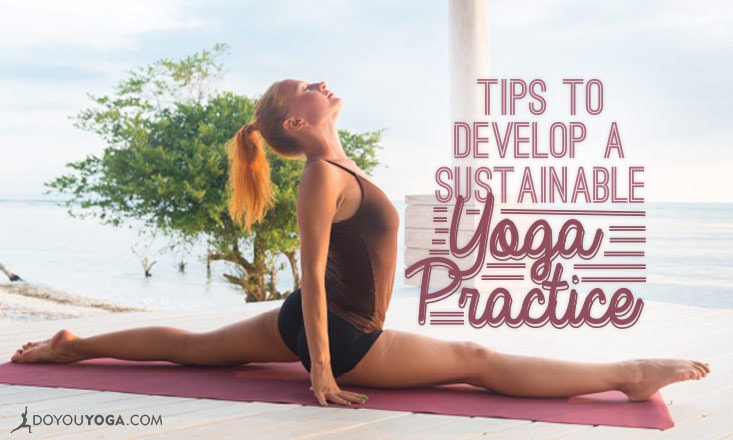I've practiced yoga for nearly two decades, but it took a midlife awakening (some might call it a crisis, but yoga helped me redefine it) six years ago to get me to take my practice seriously—as something deeper and richer than one more way to tighten and tone my tush.
Since then, my daily practice—either alone at home or in a community of others—has evolved in a way I never expected when I first rolled out my mat in my early twenties.
Many of us tiptoe to the back corner of our first yoga class with a giddy desire to create a few new contours on our thighs or triceps, or rock a party pose worthy of applause. My first class had me pining for the deep backbends and 180-degree splits I busted out with ease as a rug rat.
And that's awesome—to a point. Because eventually, if we don't dig deeper, these surface-layer reasons for practicing can quickly give way to tossing in the yoga towel for some fitness trend flavor of the month.
Now don't misunderstand me. I'm all for sampling just about any new flavor the modern fitness world has to hype. If it gets me away from the laptop or from my lap-hogging lazy cat, I’ll test my courage and humility quotient at some crazy surfboard/trampoline/acro/spin class hybrid any time.
But yoga has sooo much more to offer. Here are five ways to develop a daily yoga practice that offers continual growth and joy, both on the mat and beyond.
1. Begin with an intention.
Most teachers (I always do) provide space in opening "oms" for students to set one, but if they don't, set one anyway. An intention gives purpose to your practice, and gives you a place to come back to any time your mind wanders (and it will!) throughout the class.
You don’t have to come up with some deep pontification derived from the Bhagavad Gita. Rather, find an intention you know will keep you focused in a loving way.
A few I use are "Accept whatever shows up on the mat today, physically and emotionally," or "I intend to breathe as deeply and as consciously as possible from start to finish."
Setting an intention adds a whole new dimension to your practice, helping you navigate through areas of your life where you feel stuck. For example, my "acceptance" intention has helped me get past the expectation of never making a mistake in a first writing draft or new recipe.
And breathing deeply and consciously for 90 minutes in class has helped me relax a wee bit more at the first sound of the drill in the dentist’s chair.
2. Drop everything you believe about yourself and others.
Sounds a little extreme, and perhaps it is, but in a good way! Going into class free of self beliefs ("I'm not flexible!” “I ate too many animal crackers last night to take that deep twist!" or even "I rock at Half Moon—I got this!”) allows you to re-invent. Kinda like Halloween on the mat!
Letting go of expectations, beliefs, and all the other head crap gives us the opportunity to see what's truly, honestly possible for our future—both on the mat and off of it.
And letting go of believing you already “got this” (see the next tip on this one) frees you up to learn something new, and not feel humiliated if, on this day, you “don’t” got this. So go ahead—use your practice to be Superman or Wonder Woman. No costume required.
3. Seek newness in every pose.
At some point, the poses, the transitions, and the teachers’ cues are all going to feel familiar. And familiar can feel really cool. But it can also feel…well, familiar. Instead of yawning at what you think you already know, find something new in that Downward Facing Dog you’ve done 8,000 times.
Fact is, you haven’t done this Downward-Facing Dog yet. Feel what’s different. Find a specific area to focus on—maybe it’s your fingertips—are they pressing and spreading evenly into the mat? How about your stance?
Walk your feet a foot further back and see how that feels. Might feel awful. Might feel awesome. You won’t know if insist that you already know!
4. Pat your own back.
Never leave class without thanking yourself for your effort. I started doing this, even after my most frustrating practices, and have noticed a marked improvement in my overall self-esteem. It also sets me up for a positive, powerful practice the next time I meet my mat.
Showing up, doing the work, and facing our unvarnished selves is worth a serious high five. So do it. You’ve spent a good hour or so stretching your spine, so reach back and give it a pat.
5. Don’t stop now.
Take what you’ve gained in class and invest it into the rest of your day. You feel great, so make someone else feel great with a smile, compliment, bigger tip than usual, or simply your undivided attention.
The rest of the world is on hyper-speed and you’ve just come back to the glory of presence through your work on the mat—so why not share it?


